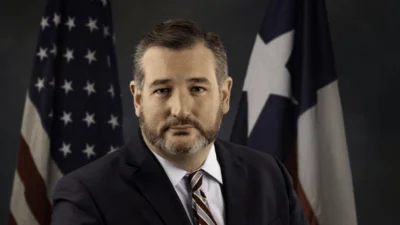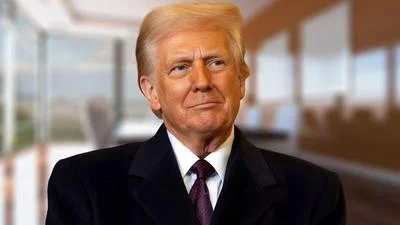The Congressional Record is a unique source of public documentation. It started in 1873, documenting nearly all the major and minor policies being discussed and debated.
“AMENDING OCCUPATIONAL SAFETY AND HEALTH ACT OF 1970” mentioning the U.S. Dept of Labor was published in the House of Representatives section on pages H1177-H1179 on March 17, 1998.
The publication is reproduced in full below:
AMENDING OCCUPATIONAL SAFETY AND HEALTH ACT OF 1970
Mr. BALLENGER. Mr. Speaker, I move to suspend the rules and pass the bill (H.R. 2877) to amend the Occupational Safety and Health Act of 1970, as amended.
The Clerk read as follows:
H.R. 2877
Be it enacted by the Senate and House of Representatives of the United States of America in Congress assembled, SECTION 1. INSPECTIONS.
Section 8 of the Occupational Safety and Health Act of 1970
(29 U.S.C. 657) is amended by adding at the end the following:
``(h) The Secretary shall not use the results of enforcement activities, such as the number of citations issued or penalties assessed, to evaluate employees directly involved in enforcement activities under this Act or to impose quotas or goals with regard to the results of such activities.''.
The SPEAKER pro tempore. Pursuant to the rule, the gentleman from North Carolina (Mr. Ballenger) and the gentleman from New York (Mr. Owens) each will control 20 minutes.
The Chair recognizes the gentleman from North Carolina (Mr. Ballenger).
Mr. BALLENGER. Mr. Speaker, I yield myself such time as I may consume.
Mr. Speaker, H.R. 2877 amends the Occupational Safety and Health Act to prohibit the use of enforcement measures, such as numbers of citations and penalties, for evaluating OSHA compliance officers.
Mr. Speaker, few other Federal agencies have had the negative reputation among employers, hardly ever anybody with the reputation of OSHA. There are certainly those who would say that this attitude simply reflects the employer's lack of concern for the health and safety of their employees. As a businessman, I do not believe that myself. Instead, I think the problem has been with OSHA. I would note my agreement with the statement made by Vice President Gore that he made to hundreds of small business owners and representatives in 1995 at the White House Conference on Small Business, where he said,
I know that OSHA has been the subject of more small business complaints than any other agency. And I know that it is not because you don't care about keeping your workers safe. It is because the rules are too rigid and the inspections are often adversarial.
I would add one more reason to those stated by the Vice President: OSHA's longtime practice of evaluating its overall performance and the performance of its compliance personnel, the only people from OSHA that most employers and employees ever actually deal with, primarily on the basis of their enforcement numbers. Employers are justifiably outraged and resentful of an agency when its inspectors are primarily interested in finding violations so that they look good to their superiors.
A couple of years ago the deputy administrator of OSHA who had spent his career with the agency made the observation that
OSHA for the past 25 years has basically done business the same way. Congress gave us the money and we gave them the inspections. We finally realized that the number of inspections doesn't change the behavior of anyone and listened to employers who complained that the violations OSHA cited didn't relate to illness and injuries.
I might add that that realization by OSHA came about the same time that we in Congress began trying to refocus OSHA away from enforcement as its primary purpose and goal. Today we take a small step toward correcting history and the practice of OSHA. H.R. 2877 amends the Occupational Safety and Health Act to prohibit the use of enforcement measures, such as number of citations or amount of penalties, to evaluate OSHA personnel. It also prohibits the use of such enforcement measures as goals or quotas. More broadly, this bill is intended to direct OSHA's focus towards promoting safety rather than viewing its goal and purpose as penalizing employers.
I want to express again my appreciation to the gentleman from New York (Mr. Owens), the ranking member of the subcommittee, and the gentleman from Missouri (Mr. Clay), the ranking member of the full committee, as well as the gentleman from Pennsylvania (Mr. Goodling), the chairman, for their support of this bill, and also to the Secretary of Labor and the Assistant Secretary for Occupational Safety and Health, who have also expressed support for this bill.
As I noted earlier, the problem of evaluating OSHA personnel by the number of citations issued has not been confined to either Republican or Democrat administrations. It did, however, become particularly obvious when the Clinton administration in its first 2 years set agencywide goals of increased citations and penalties. Inspectors openly spoke to employees about having to issue citations in order to meet their quotas. I think few actions have undercut the agency's credibility as a safety and health agency more than that. To its credit the Clinton administration has taken steps to reverse this course. The previous and current administrators of OSHA have taken steps to remove the most blatant uses of citations and penalties to evaluate employees. Officially citations and penalties are no longer used as a performance measure. This was one of the steps taken as part of OSHA's reinvention by the Clinton administration. I certainly think it is a step in the right direction and one that I strongly supported. Nonetheless, we continue to hear complaints both from employers and from compliance personnel.
Just recently, for example, compliance officers in one region were given benchmarks by which their performance was judged. Those benchmarks included such things as numbers of citations per inspection and percentage of serious versus nonserious violations. This legislation is needed for several reasons: first, to make sure that the current official policy of the agency is continued; second, to make clear to everyone throughout OSHA that the use of enforcement measures to evaluate compliance personnel is not permitted; third, to assure not only OSHA personnel but also employers and employees that OSHA's primary purpose is not citing and fining employers but in promoting safer jobs.
Mr. Speaker, I reserve the balance of my time.
Mr. OWENS. Mr. Speaker, I yield myself such time as I may consume.
Mr. Speaker, again I want to thank the gentleman from North Carolina
(Mr. Ballenger), the chairman of the Subcommittee on Workforce Protections, for his willingness to work with me on this legislation. I fully concur in the gentleman's view that OSHA should not adopt work performance measures that can serve to bias the inspection process. The Clinton administration also strongly shares this view.
I do want to take this time to congratulate the administration and the workers at OSHA. There are few agencies that have such life and death responsibilities as OSHA. We must remember that last year more than 6,000 workers died on the job and nearly 60,000 were injured on the job. The work at OSHA remains very important and will go on. I think we should understand the difficulties that the OSHA inspectors face in respect to the inconvenience of employers versus the protection of the health and safety of employees. I therefore support H.R. 2877 and urge its adoption.
Mr. ROEMER. Mr. Speaker, I would like to voice my support today for H.R. 2877 and H.R. 2864. Both of these are encouraging examples of meaningful bipartisan reform that are enabling the agency to move from an adversarial relationship with employers to a cooperative one.
The common sense changes in H.R. 2877 assure that inspectors do not have to ever exaggerate the number or severity of violations they might find in work site inspections. It does so without compromising the safety of workers and without losing managerial control of the agency.
H.R. 2864 works to partner state consultation programs with businesses who seek advice on OSHA compliance. It is a great example of how OSHA can proactively cooperate with employers to correct problems without unnecessary fines before they cause injury or cost a life. It also focuses on small businesses in hazardous industries that may not be able to afford full-time safety managers or expensive consultants.
In the spirit of these effective and bipartisan measures, I plan on introducing a bill that helps solve a problem that some employers are having maintaining their Material Safety Data Sheets as mandated by OSHA. By allowing electronic access to these records, standardizing the format, and setting a comprehensible reading level, I hope to increase worker safety while lowering costs and headaches for small businessmen.
Again, these are excellent bills, and I wish to offer my utmost support. I encourage my colleagues to do the same.
Mr. UNDERWOOD. Mr. Speaker, I rise in support of H.R. 2877. ``Safety First,'' is a catchphrase known to many of us. Although, often disregarded, the virtue and benefits of this policy are universally recognized, accepted and appreciated. The concept of safety has attracted so huge a following that eventually it was decided that everyone should follow and live by its precepts. Later, we even came up with legal definitions. However, as most well-meaning folks have done before, we may have gone overboard by selectively imposing this concept and designating some a few unfortunate entities to suffer the consequences for everyone. A scheme was even devised so that we can collect money from those who deviated from our mandates. This bring us to question whether safety is really the first priority.
H.R. 2877 prohibits the Labor Department and the Occupational Safety and Health Administration (OSHA) from using results of enforcement activity, such as numbers of citations issued and penalties assessed, to evaluate employees directly involved in OSHA enforcement activities. In addition, this bill would prohibit OSHA from imposing quotas or goals for citations or penalties on its inspectors.
Coming from the island of Guam, I am no stranger to complaints of unfair treatment by Federal officials. OSHA issues have generated their fair share of attention on the island. Contractors of Guam feel that they are being singled out by OSHA inspectors. Figures show that 85% to 90% of the Administration's inspection resources for our region was spent on Guam although we had the lowest fatality rates and some of the lowest injury rates of Region IX.
Consistency in OSHA's definitions also come to question. OSHA has stated that increased inspection activity in our area is due to the presence of high hazard industries. However, nowhere else are labor camps listed as high hazard industries. Innovative programs and approaches such as Voluntary Programs and ``Quick Fix'' Programs have not been made available to Guam. It has also been brought to my attention that as of May 1997, OSHA Enforcement officers have been stripped of all authority except to conduct selected inspections.
H.R. 2877's provisions would not solve all of the world's problems. However, if OSHA's inspectors do not have to worry about quotas, we can greatly reduce unfair citations and fines. Safety first; fines only if necessary; and quotas . . . quotas are not at all necessary. I urge my colleagues to support H.R. 2877.
Mr. OWENS. Mr. Speaker, I yield back the balance of my time.
Mr. BALLENGER. Mr. Speaker, I yield back the balance of my time.
The SPEAKER pro tempore. The question is on the motion offered by the gentleman from North Carolina (Mr. Ballenger) that the House suspend the rules and pass the bill, H.R. 2877, as amended.
The question was taken; and (two-thirds having voted in favor thereof) the rules were suspended and the bill, as amended, was passed.
A motion to reconsider was laid on the table.
____________________








